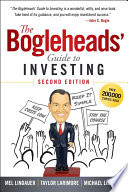

The Bogleheads emphasize the importance of a long-term investment strategy. This approach is rooted in the belief that time in the market is more beneficial than timing the market. By investing consistently over a long period, you can take advantage of compound interest and market growth. The book encourages investors to adopt a buy-and-hold philosophy, which minimizes transaction costs and taxes. The long-term perspective helps investors ride out market volatility, reducing the stress associated with short-term fluctuations. This idea also aligns with the Bogleheads' advocacy for index funds, which typically perform better than actively managed funds over extended periods. By focusing on long-term goals, investors can avoid the pitfalls of emotional investing and market timing, leading to a more stable financial future.
Continue readingDiversification is one of the core principles discussed in the book. The Bogleheads advocate for spreading investments across various asset classes, sectors, and geographic regions to reduce risk. By diversifying, investors can protect themselves from significant losses in any single investment. The book provides guidance on how to construct a diversified portfolio using low-cost index funds and ETFs. The rationale is that while individual stocks may be volatile, a well-diversified portfolio can smooth out returns over time. The authors explain the concept of asset allocation, which involves determining the right mix of stocks, bonds, and other investments based on individual risk tolerance and investment goals. This strategy not only mitigates risk but can also enhance returns by capturing growth in different areas of the market.
Continue readingOne of the fundamental tenets of the Bogleheads philosophy is to minimize investment costs. High fees associated with actively managed funds can erode investment returns over time. The book highlights the importance of choosing low-cost index funds and ETFs, which typically have lower expense ratios compared to their actively managed counterparts. The authors provide calculations demonstrating how even small differences in fees can lead to significant differences in investment outcomes over the long term. By keeping costs low, investors can maximize their returns and achieve their financial goals more efficiently. The Bogleheads also discuss the importance of being mindful of trading costs and taxes, advocating for tax-efficient investing strategies, such as holding investments in tax-advantaged accounts.
Continue readingThe Bogleheads stress the importance of understanding one's risk tolerance before making investment decisions. Risk tolerance is the degree of variability in investment returns that an individual is willing to withstand. The book encourages readers to assess their financial situation, investment goals, and emotional comfort with market fluctuations. By aligning their investment strategy with their risk tolerance, investors can avoid panic selling during market downturns and remain focused on their long-term objectives. The authors provide tools and frameworks for evaluating risk tolerance, including questionnaires and discussions on the psychological aspects of investing. This understanding helps investors make informed decisions about asset allocation and investment choices that suit their personal circumstances.
Continue readingThe Bogleheads advocate for a disciplined approach to investing, encapsulated in the mantra 'stay the course.' This idea emphasizes the importance of sticking to your investment plan, even during turbulent market conditions. The authors argue that many investors are prone to making emotional decisions based on short-term market movements, which can lead to poor outcomes. By maintaining a consistent investment strategy and resisting the urge to react to market noise, investors can achieve better long-term results. The book provides strategies for staying the course, such as regular portfolio reviews, rebalancing, and setting realistic expectations. The Bogleheads also highlight the importance of having a well-defined investment plan that aligns with personal goals, which can serve as a guiding framework during challenging times.
Continue readingEducation is a cornerstone of the Bogleheads philosophy. The book encourages readers to take an active role in their financial education by learning about investing principles, financial markets, and personal finance. The authors provide a wealth of resources, including recommended books, websites, and online forums where investors can engage with others and expand their knowledge. By educating themselves, investors can make informed decisions, avoid common pitfalls, and develop a deeper understanding of the investment landscape. The Bogleheads also emphasize the importance of critical thinking and skepticism when evaluating investment products and advice. This knowledge empowers investors to take control of their financial futures and build wealth through informed decision-making.
Continue readingThe Bogleheads stress the importance of having a well-defined investment plan that outlines individual goals, risk tolerance, and asset allocation. A clear plan serves as a roadmap for investors, helping them navigate the complexities of the financial markets. The book outlines the steps to create an investment plan, including setting specific financial goals, determining the appropriate asset allocation, and establishing a rebalancing strategy. By having a plan in place, investors can make more rational decisions, reducing the likelihood of emotional reactions to market fluctuations. The authors also emphasize the importance of regularly reviewing and updating the plan to reflect changes in personal circumstances and market conditions. This proactive approach to investing fosters discipline and encourages long-term success.
Continue reading